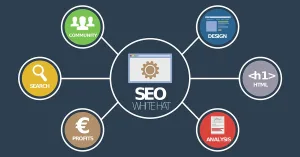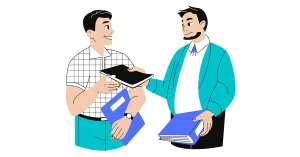MoneyThumb provides the best selling PDF financial file converters on the market, and some of our best customers are lenders. The lenders we serve to use a version of our proprietary software that is specifically designed for them. Today's post from the Rules of Thumb blog brings excellent news to these lenders and to borrowers who before could not qualify for a loan.
According to studies accumulated in this article from Lending Times, alternative lending has now gone mainstream. Below we are sharing some of that collected data from various research studies:
Today, an estimated 45 to 60 million consumers lack the credit history needed to generate reliable credit scores under the current system, and millions more don’t have access to affordable credit because of low scores, according to FinRegLab, a nonprofit research organization.
But now, alternative lending is on the cusp of widespread adoption by lenders. In fact, some lenders are already considering alternative data, such as records of consumer payments from telecoms and utilities, in their decision to extend credit. And there’s solid evidence that alternative lending works. Research from McKinsey found that new alternative data models reduced credit losses in lower-income segments by 20 to 50% while doubling application approval rates.
Perhaps the best news is that lenders are embracing alternative lending after learning that they can bring disadvantaged consumers into their customer bases without increasing the risk of loan defaults. Those include thin-file or no-file consumers, such as:
- Seniors who are unscorable, particularly widowed or divorced adults. Many have relied on lines of credit in their partner’s names for most of their lives, leaving them with a lack of credit history and a sudden lack of credit access.
- Immigrants, who can present a conundrum to lenders, as their credit data does not immigrate with them. Lenders are left to make assumptions about credit history, and often the safer decision has been to exclude or decline the individual.
- Minority groups, who today are disproportionately underserved. According to a LexisNexis study, 41% of Hispanics and African Americans were unscorable using traditional methods, compared to only 24% of the general population.
- Millennials tend to rely on credit less frequently and a significant portion prefers debit cards. This leads to thin credit files and “hidden” financial transactions that do not help boost credit scores.
Here is another proof point that alternative lending has arrived: Adding utility payment data into VantageScore’s credit score increased approval rates for low-income adults, African-Americans, and Hispanics by more than 20% – without overextending credit.
Alternative data has become the Holy Grail for lenders because they can increase the size and improve the quality of their approvable populations. But, even with mountains of evidence of the viability of alternative lending, it may be that only the word of regulators has the power to move alternative lending from trend to a sustainable mainstream industry practice.
On Dec. 3, 2019, regulators backed the use of alternative data, such as borrowers’ cash flow, as an alternative to the traditional credit-evaluation system, which relies on applicants’ history of borrowing and repayments. Alternative data “may help firms evaluate the creditworthiness of consumers who currently may not obtain credit in the mainstream credit system,” the regulators said in a written statement. “To the extent, firms are using or contemplating using alternative data, the agencies encourage responsible use of such data.”
Now, with increasing adoption of alternative data by lenders, there comes word that “innovative” new options in lending will gain momentum. According to researchers, “It [alternative lending] has already gained momentum in developed countries. The growing significance of innovative lending practices is foreseen to put a positive impact on the growth of the global alternative lending market. Demand for peer-to-peer (P2P) marketplace lending and crowdfunding, in particular, is expected to increase in the near future. This could play a crucial role in the development of the global market.”
As always, the proof is in the numbers. In a recent report of more than 300 lenders by TransUnion, the agency said that “83% of adopters using alternative data to score credit applications report seeing tangible benefits.”
It’s been said that the best test of an innovation is to observe its acceptance and performance in the marketplace. By that measure, alternative lending has been thoroughly tested and is here to stay. This is great news for both alternative lenders like the ones who use MoneyThumb's software and for borrowers who before could not qualify for a loan. It is a new dawn for the lending industry!





















Add comment